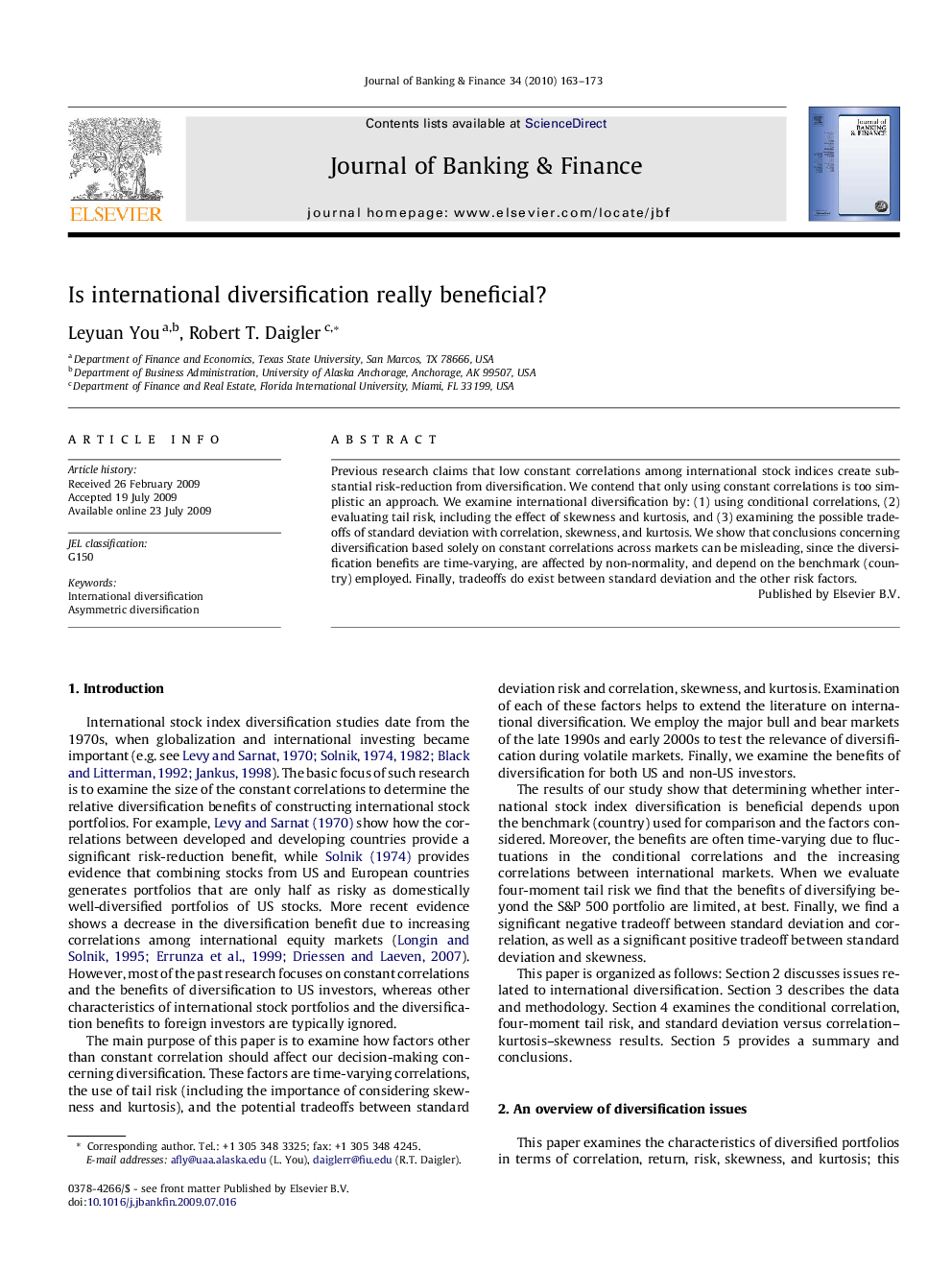| Article ID | Journal | Published Year | Pages | File Type |
|---|---|---|---|---|
| 5091061 | Journal of Banking & Finance | 2010 | 11 Pages |
Abstract
Previous research claims that low constant correlations among international stock indices create substantial risk-reduction from diversification. We contend that only using constant correlations is too simplistic an approach. We examine international diversification by: (1) using conditional correlations, (2) evaluating tail risk, including the effect of skewness and kurtosis, and (3) examining the possible tradeoffs of standard deviation with correlation, skewness, and kurtosis. We show that conclusions concerning diversification based solely on constant correlations across markets can be misleading, since the diversification benefits are time-varying, are affected by non-normality, and depend on the benchmark (country) employed. Finally, tradeoffs do exist between standard deviation and the other risk factors.
Keywords
Related Topics
Social Sciences and Humanities
Economics, Econometrics and Finance
Economics and Econometrics
Authors
Leyuan You, Robert T. Daigler,
